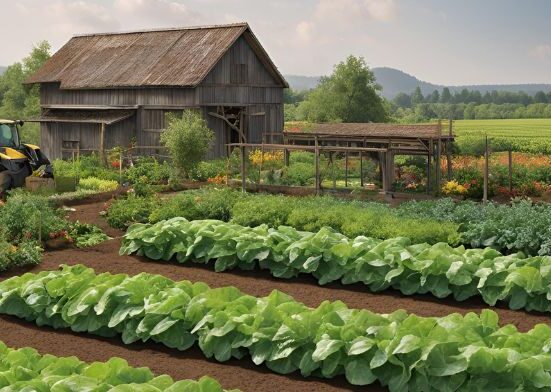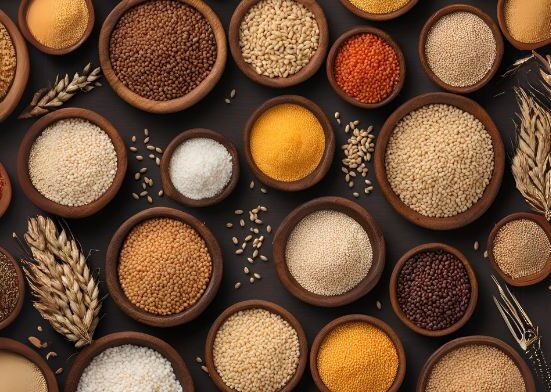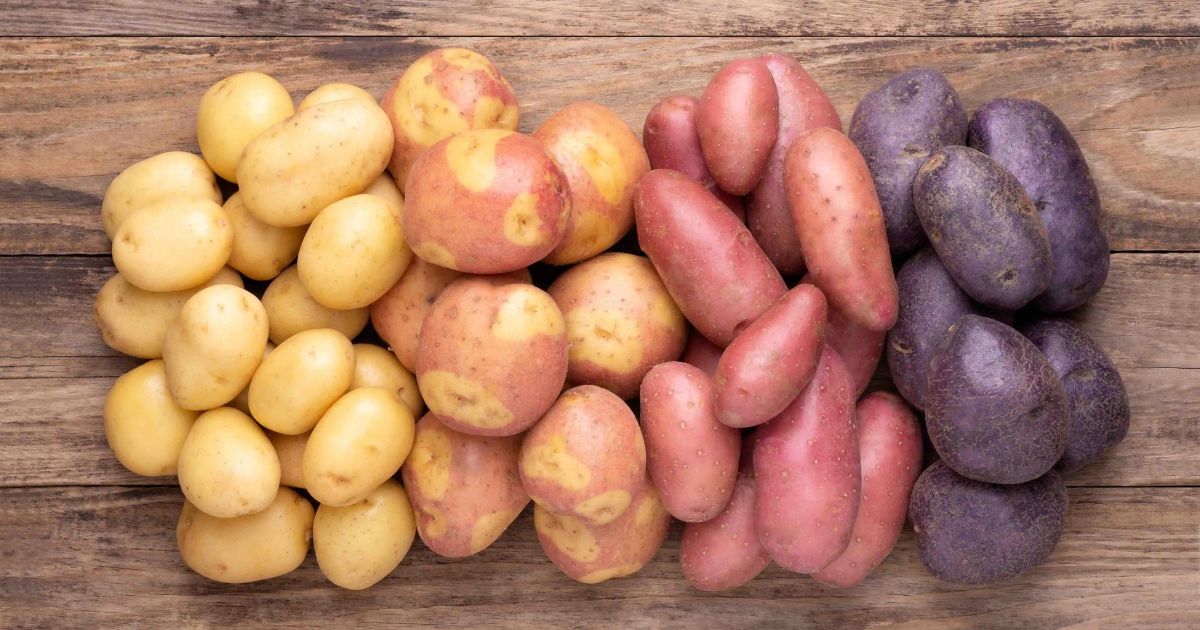Potatoes have become a global culinary staple, gracing tables in countless forms—mashed, fried, boiled, or roasted. When it comes to comfort food, few ingredients are as versatile and beloved as potatoes. However, two distinct types of potatoes—sweet potatoes and Irish potatoes—often spark debates about which reigns supreme in the kitchen. While both varieties share some similarities, including their starchy texture, they offer a range of unique flavors and nutritional benefits. Sweet potatoes are known for their naturally sweet taste and vibrant orange color, while Irish potatoes, or white potatoes, have a more neutral flavor, making them the perfect canvas for a variety of dishes. In this showdown, we’ll explore the distinct qualities of each, from their culinary uses to their health benefits, helping you decide which potato is the ultimate choice for your next meal!
A Tale of Two Tubers: Origins and Botany
Let’s start with the basics: sweet potatoes and Irish potatoes aren’t even distant cousins. Sweet potatoes (Ipomoea batatas) belong to the morning glory family, Convolvulaceae, and are native to Central and South America. Archaeological evidence suggests they were cultivated as early as 8000 BCE in Peru, long before Christopher Columbus introduced them to Europe in the late 15th century. Today, sweet potatoes are grown in tropical and subtropical regions worldwide, with China leading as the top candy irish potatoes recipe producer.
Irish potatoes (Solanum tuberosum), also known as white potatoes, hail from the nightshade family, Solanaceae, alongside tomatoes, eggplants, and peppers. Originating in the Andes of South America, they were domesticated around 7,000–10,000 years ago. Spanish explorers brought them to Europe in the 16th century, where they eventually became a dietary cornerstone, especially in Ireland, earning the moniker “Irish potato.” Today, they’re a global crop, with major producers including China, India, and Russia.
Botanically, sweet potatoes are storage roots, while Irish potatoes are tubers—underground stems. This distinction influences their texture and flavor: sweet potatoes are denser and naturally sweeter, while Irish potatoes are starchier and more neutral. These differences set the stage for their culinary and cultural roles.
Origins of Sweet Potatoes: Central/South America.
Sweet Potatoes: Native to Central and South America, sweet potatoes (Ipomoea batatas) have been cultivated for thousands of years. They were an important crop for indigenous peoples in regions like modern-day Peru, Ecuador, and parts of the Caribbean. Their cultivation spread gradually throughout the world, especially after European explorers introduced them to new continents. Today, they are grown in many tropical and subtropical areas around the irish potatoes recipe candy commercial agriculture globe.
Origins of Irish Potatoes: Andes Mountains, Peru/Bolivia.
Irish Potatoes: Unlike sweet potatoes, Irish potatoes (Solanum tuberosum), also known simply as potatoes, originated in the Andes Mountains, primarily in Peru and Bolivia. These tubers were domesticated by ancient civilizations in the region long before they reached Europe in the 16th century. The spread of the potato across Europe was transformative, playing a crucial role in feeding populations during periods of famine and revolutionizing agricultural practices. The potato became especially central to Irish agriculture, leading to its alternative name, “Irish potato. Both potatoes have become staples in various cuisines worldwide, but their distinct histories highlight the incredible journey of these crops across continents.
Nutritional Showdown: Health Benefits and Drawbacks
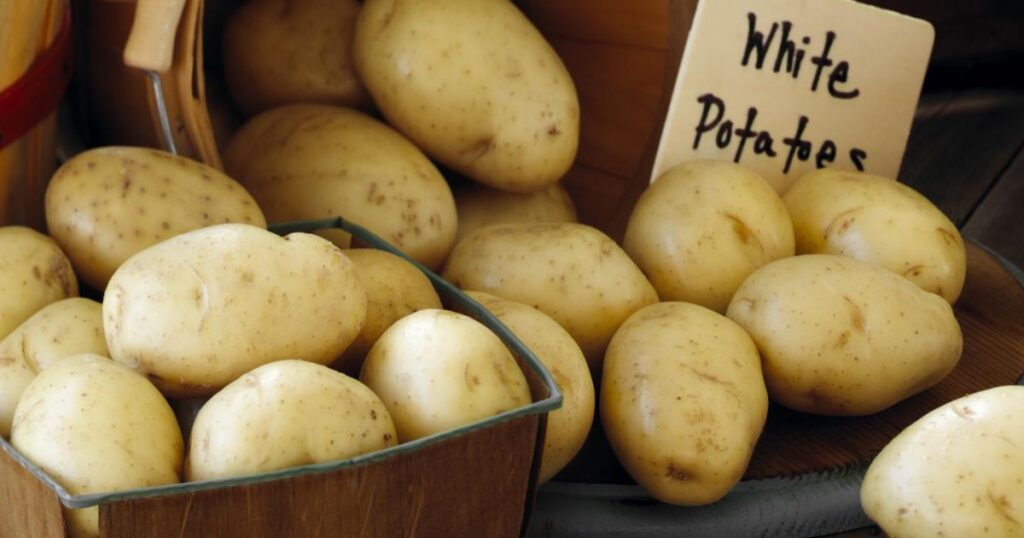 Nutritional Showdown: Health Benefits and Drawbacks explores the complex world of food and nutrition by comparing popular diets, ingredients, and eating habits. This engaging piece delves into the benefits and potential downsides of various food choices, such as plant-based diets, keto, intermittent fasting, and ultra-processed foods. It highlights how certain nutrients boost energy, immunity, and mental clarity, while others, when consumed excessively, may contribute to chronic diseases. With a balanced tone, the showdown doesn’t promote one-size-fits-all solutions but instead encourages informed, personalized Organic methods to enhance soil fertility decisions.
Nutritional Showdown: Health Benefits and Drawbacks explores the complex world of food and nutrition by comparing popular diets, ingredients, and eating habits. This engaging piece delves into the benefits and potential downsides of various food choices, such as plant-based diets, keto, intermittent fasting, and ultra-processed foods. It highlights how certain nutrients boost energy, immunity, and mental clarity, while others, when consumed excessively, may contribute to chronic diseases. With a balanced tone, the showdown doesn’t promote one-size-fits-all solutions but instead encourages informed, personalized Organic methods to enhance soil fertility decisions.
It considers factors like sustainability, cultural relevance, and accessibility, making the content inclusive and relatable. Whether you’re a fitness enthusiast, a health-conscious eater, or just curious about food trends, this article helps you understand what’s really on your plate. By weighing pros and cons, Nutritional Showdown empowers readers to make smarter, healthier, and more conscious dietary choices in a world filled with conflicting nutrition advice.
Nutritional Knockout: Comparing Health Benefits
Nutritional Knockout: Comparing Health Benefits” explores the powerful impact that different foods and diets can have on our overall well-being. From protein-packed legumes to antioxidant-rich fruits, each food group offers distinct advantages. By examining the nutritional content of various foods—like their vitamins, minerals, and essential fatty acids—this comparison highlights how certain choices can enhance energy levels, improve skin health, and support heart function. The goal is to empower consumers to make better food choices, promoting long-term health through a balanced diet. Understanding these benefits provides a pathway to optimize both physical and mental health while preventing chronic diseases. When it comes to nutrition, both potatoes pack a punch, but they cater to different needs. Let’s break it down with a side-by-side comparison of their nutritional profiles (per 100 grams, cooked, without skin):
- Calories: Sweet potato: 86 kcal; Irish potato: 77 kcal
- Carbohydrates: Sweet potato: 20.1 g; Irish potato: 17.5 g
- Fiber: Sweet potato: 3 g; Irish potato: 2.1 g
- Protein: Sweet potato: 1.6 g; Irish potato: 2.5 g
- Fat: Sweet potato: 0.1 g; Irish potato: 0.1 g
- Vitamin A: Sweet potato: 709 µg (79% DV); Irish potato: 0 µg
- Vitamin C: Sweet potato: 2.4 mg (3% DV); Irish potato: 19.7 mg (22% DV)
- Potassium: Sweet potato: 337 mg; Irish potato: 425 mg
- Glycemic Index: Sweet potato: 44–94 (varies by preparation); Irish potato: 60–95
Sweet Potatoes: The Antioxidant Powerhouse
Sweet potatoes, especially orange-fleshed varieties, are a nutritional darling thanks to their high beta-carotene content, which the body converts to vitamin A. This makes them excellent for eye health, immune function, and skin health. Their vibrant color signals a wealth of antioxidants, including anthocyanins in purple-fleshed varieties, which may reduce inflammation and protect against chronic diseases like heart disease and cancer.
The fiber in sweet potatoes supports digestive health and helps regulate blood sugar, despite their sweetness. They’re also a good source of manganese, which aids metabolism, and vitamin B6, which supports brain health. However, their vitamin C content is lower than that of Irish potatoes, and they have slightly more calories and carbs, which might matter for those watching irish sweet potatoes their intake.
Irish Potatoes: The Potassium King
Irish potatoes are no slouch in the nutrition department. They’re a fantastic source of potassium, which supports heart health, muscle function, and blood pressure regulation. Their vitamin C content is surprisingly high, historically helping sailors ward off scurvy during long voyages. Irish potatoes also provide a decent amount of fiber, especially when eaten with the skin, and their protein, while modest, includes essential amino acids.
One downside is their higher glycemic index, especially when boiled or mashed, which can cause quicker blood sugar spikes. However, cooling cooked potatoes (as in potato salad) increases resistant starch, which acts like fiber and may improve insulin sensitivity. Irish potatoes lack the antioxidant punch of sweet potatoes but remain a solid, low-fat energy source.
The Verdict
If you’re prioritizing antioxidants and vitamin A, sweet potatoes take the crown. For potassium, vitamin C, and a slightly lower glycemic load when prepared thoughtfully, Irish potatoes shine. Both are nutrient-dense and can fit into a balanced diet—it just depends on your How Can Farmers Cut Waste in Sustainable Agriculture goals.
Culinary Clash: Versatility in the Kitchen
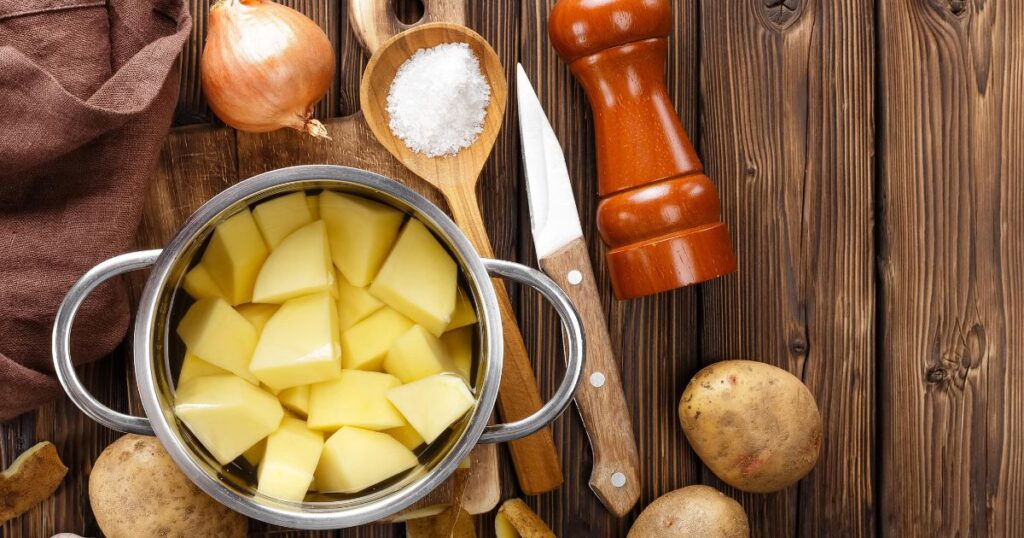 Now, let’s get to the fun part: how these potatoes perform in the kitchen. Both are incredibly versatile, but their flavors and textures lend themselves to different dishes.
Now, let’s get to the fun part: how these potatoes perform in the kitchen. Both are incredibly versatile, but their flavors and textures lend themselves to different dishes.
Sweet Potatoes: Sweet and Savory Star
Sweet potatoes’ natural sweetness makes them a chameleon in both sweet and savory recipes. Roasted, they develop caramelized edges that pair beautifully with spices like cinnamon, cumin, or paprika. Mashed sweet potatoes, enriched with butter or coconut milk, are a comforting side dish, while sweet potato fries offer a healthier alternative to their deep-fried cousins.
In savory dishes, sweet potatoes shine in soups, stews, and casseroles, absorbing flavors while adding a creamy texture. They’re a staple in African, Caribbean, and Southern U.S. cuisines—think West African sweet potato stew or Southern candied yams. On the sweet side, sweet potato pie, a soul food classic, rivals pumpkin pie, while sweet potato gnocchi or pancakes add a creative twist. Their vibrant color also makes them a visual standout, whether spiralized into noodles or stuffed with black beans and avocado for a vegan feast. However, their sweetness can limit their use in dishes where a neutral flavor is needed.
Irish Potatoes: The Ultimate Blank Canvas
Irish potatoes are the ultimate culinary workhorse. Their mild, starchy profile makes them a blank canvas for countless preparations. Boiled, they’re the base for creamy mashed potatoes or tangy potato salad. Fried, they transform into crispy fries, hash browns, or latkes. Baked, they’re a vessel for toppings like sour cream, cheese, or chili.
Globally, Irish potatoes are indispensable. In Ireland, they star in colcannon (mashed with cabbage) and boxty (potato pancakes). In India, they’re spiced in aloo gobi or samosas. They’re the heart of causa, a layered potato dish. Their ability to absorb flavors makes them ideal for curries, gratins, and soups like vichyssoise. The downside? Irish potatoes can feel pedestrian compared to the bold, sweet potato. Without seasoning or creative preparation, they risk being bland, and their texture can turn gluey if overworked (looking at you, over-mashed potatoes).
The Verdict
Sweet potatoes win for vibrant flavor and visual appeal, especially in dishes where sweetness is a plus. Irish potatoes take the edge for sheer versatility, fitting seamlessly into virtually any cuisine or preparation. Your choice depends on the dish and the vibe you’re going sweet potato vs irish potato for.
Cultural Significance: Potatoes in History and Tradition
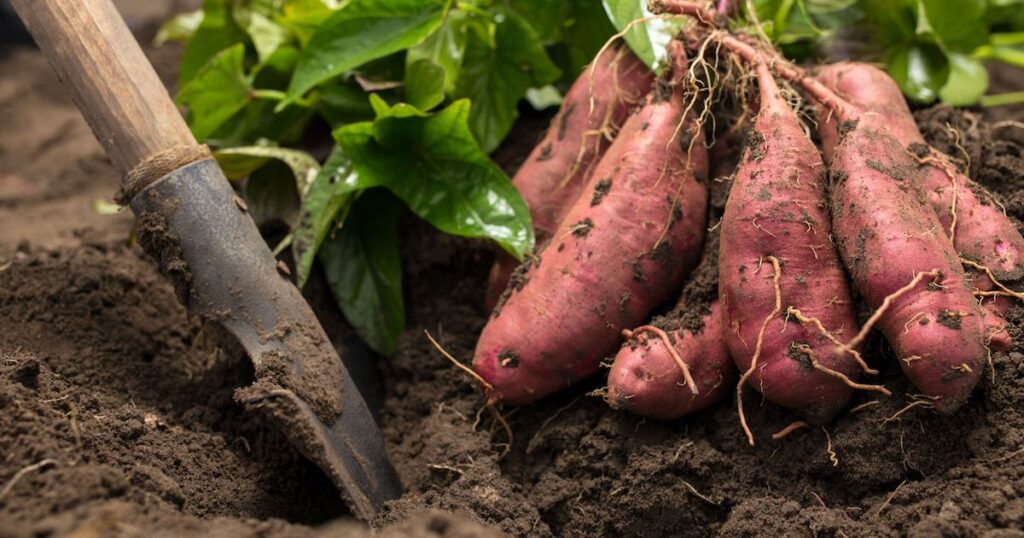 Potatoes have held deep cultural and historical significance across the globe since their domestication in the Andes over 7,000 years ago. Revered by the Inca civilization as a sacred crop, potatoes were integral to food security and even used in rituals and traditional medicine. After their introduction to Europe in the 16th century, they transformed global agriculture and cuisine, becoming a dietary staple from Ireland to Russia.
Potatoes have held deep cultural and historical significance across the globe since their domestication in the Andes over 7,000 years ago. Revered by the Inca civilization as a sacred crop, potatoes were integral to food security and even used in rituals and traditional medicine. After their introduction to Europe in the 16th century, they transformed global agriculture and cuisine, becoming a dietary staple from Ireland to Russia.
The Irish Potato Famine tragically highlighted their importance, shaping migration patterns and national memory. Potatoes have also woven themselves into traditional dishes, such as Peruvian causa, Indian aloo dishes, and Eastern European pierogi—each reflecting local identity and heritage. Beyond nutrition, the potato symbolizes resilience and adaptability, thriving in diverse climates and conditions. In modern times, festivals, folklore, and even art honor the humble tuber, underscoring its enduring role in the cultural fabric of societies worldwide.
Sweet Potatoes: A Global Traveler
Sweet potatoes have a rich cultural footprint. In the Americas, they were a pre-Columbian staple, revered by indigenous peoples. Their journey across the globe—via Polynesian explorers to the Pacific, Spanish traders to Asia, and African diaspora to the Caribbean—made them a symbol of resilience and adaptation. In Uganda, they’re a dietary staple, often boiled or mashed. In the U.S., sweet potatoes are deeply tied to African American cuisine, from candied yams at Thanksgiving to sweet potato pie in soul food traditions. They also carry a legacy of survival, as enslaved Africans used them to sustain communities in harsh conditions.
Irish Potatoes: The People’s Crop
The Irish potato’s story is one of triumph and tragedy. In Europe, it revolutionized agriculture, providing a high-yield, nutrient-rich crop that fed growing populations. In Ireland, it became a dietary cornerstone, sustaining millions until the Great Famine (1845–1852), when potato blight decimated crops, leading to mass starvation and emigration. This tragedy cemented the potato’s place in Irish identity, with dishes like colcannon remaining cultural touchstones.
Globally, Irish potatoes symbolize comfort and sustenance. From German kartoffelsalat to Russian vodka (distilled from potatoes), they’re woven into culinary traditions worldwide. Their affordability and adaptability have made them a democratic food, accessible to all.
The Verdict
Sweet potatoes carry a legacy of global exploration and cultural fusion, while Irish potatoes embody resilience and universality. Both have stories worth seeing, candy Irish potato celebrating.
Sustainability and Cultivation
In today’s world, sustainability matters. Both potatoes are relatively eco-friendly crops, but their cultivation differs. Sweet potatoes thrive in warm climates and require less water and fertilizer than many crops, making them a sustainable choice in tropical regions. Their vines can also be used as animal feed, reducing waste. Irish potatoes are more water-intensive and susceptible to diseases like blight, requiring careful management. However, their high yield per acre makes them efficient for feeding large populations. Advances in organic farming and disease-resistant varieties are improving their sustainability.
The Final Showdown: Which Potato Wins?
After exploring their origins, nutrition, culinary uses, and cultural roles, it’s time to crown a champion—or at least try to. Sweet potatoes bring bold flavor, vibrant color, and a nutritional edge with their antioxidants and vitamin A. They’re a star in sweet and savory dishes and carry a rich, global legacy. Irish potatoes counter with unmatched versatility, a neutral flavor that fits any cuisine, and a historical significance that’s hard to beat.
The truth? There’s no clear winner. Your preference depends on your taste, dietary needs, and culinary goals. Craving a nutrient-packed, slightly sweet side? Go for sweet potatoes. Need a reliable, crowd-pleasing base for any dish? Irish potatoes have your back. Better yet, why choose? Combine them in a roasted root vegetable medley or a hearty stew to enjoy the best of both worlds.
Sweet Potato Black Bean Tacos
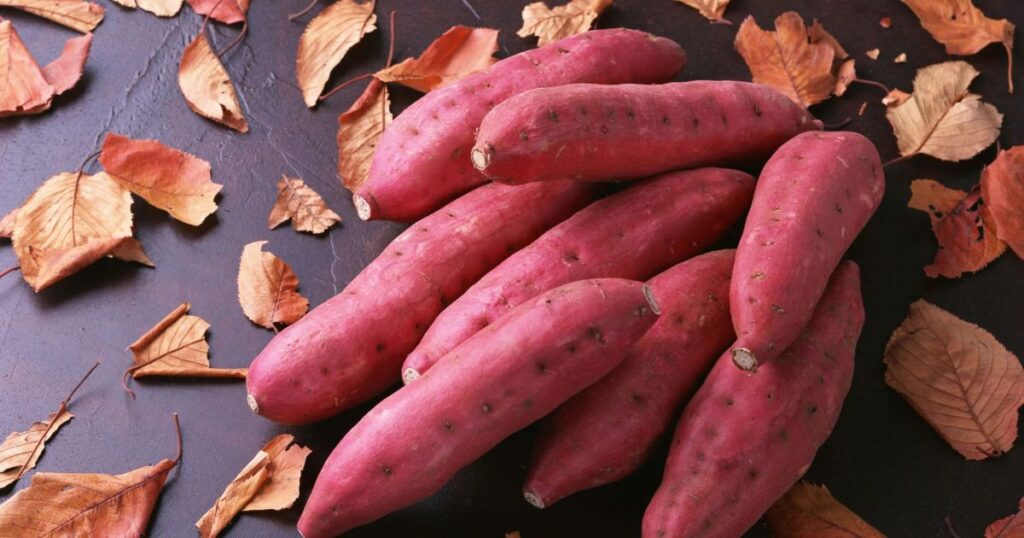 Sweet Potato Black Bean Tacos are a flavorful and nutritious twist on traditional tacos, perfect for vegetarians and anyone craving bold, satisfying flavors. Roasted sweet potatoes, seasoned with smoky spices like cumin and paprika, provide a tender, slightly sweet base that pairs beautifully with hearty black beans. The combination creates a filling that’s rich in fiber, protein, and essential nutrients.
Sweet Potato Black Bean Tacos are a flavorful and nutritious twist on traditional tacos, perfect for vegetarians and anyone craving bold, satisfying flavors. Roasted sweet potatoes, seasoned with smoky spices like cumin and paprika, provide a tender, slightly sweet base that pairs beautifully with hearty black beans. The combination creates a filling that’s rich in fiber, protein, and essential nutrients.
Served in warm corn tortillas, these tacos are typically topped with fresh garnishes like crunchy cabbage slaw, creamy avocado slices, tangy lime juice, and a drizzle of chipotle or cilantro-lime crema. The contrast of textures—crispy, creamy, and chewy—makes every bite exciting. Ideal for a quick weeknight meal or casual entertaining, Sweet Potato Black Bean Tacos are as vibrant on the plate as they are delicious. They’re a crowd-pleasing option that can easily be made vegan or gluten-free with the right toppings and tortilla choices.
Classic Irish Potato Colcannon
Classic Irish Potato Colcannon is a comforting and hearty traditional dish that combines creamy mashed potatoes with tender green cabbage or kale, creating a rich, flavorful side that’s both rustic and satisfying. Often enhanced with scallions, butter, and sometimes a splash of milk or cream, colcannon is a beloved staple of Irish cuisine, especially popular during fall and winter months. The dish has humble origins as a peasant food, yet its simplicity and warmth have made it a cherished part of Irish holiday meals, especially around Halloween.
The buttery potatoes are mashed to a smooth consistency, while the greens add texture and an earthy contrast. Typically served with a well of melted butter in the center, it pairs beautifully with roasted meats or sausages. Colcannon’s appeal lies in its homestyle charm and adaptability, making it a delicious way to honor Irish culinary tradition. Have you tried making colcannon with kale or prefer cabbage?
Conclusion:
Sweet potatoes and Irish potatoes may share a name, but they’re distinct in flavor, nutrition, and cultural impact. Whether you’re drawn to the sweet, antioxidant-rich allure of sweet potatoes or the versatile, comforting neutrality of Irish potatoes, both deserve a spot in your kitchen. So, grab a few of each and experiment next time you’re at the market. The real winner of this showdown? Your taste buds.
FAQ:
Are Sweet Potatoes and Irish Potatoes the Same Thing?
No, sweet potatoes and Irish potatoes (commonly just called white potatoes) are entirely different plants. They belong to different botanical families: sweet potatoes are from the morning glory family (Convolvulaceae), while Irish potatoes are part of the nightshade family (Solanaceae).
Which one is Healthier?
It depends on what you’re looking for. Sweet potatoes are higher in vitamin A (in the form of beta-carotene) and fiber, while Irish potatoes are slightly higher in potassium and vitamin C. Both can be healthy choices when prepared without excess fat, salt, or sugar.
Do Sweet Potatoes and Irish Potatoes Taste the Same?
Not at all. Sweet potatoes have a naturally sweet, rich flavor, while Irish potatoes have a more neutral, earthy taste that makes them versatile in both savory and creamy dishes.
Can you substitute one for the other in Recipes?
Sometimes, but not always. While you can mash, bake, or fry both, their different textures and flavors may change the outcome. For example, a sweet potato pie will taste very different if made with Irish potatoes.
Which is Better for Weight loss?
Both can fit into a weight-loss plan if portion sizes are controlled. Sweet potatoes tend to have a slightly lower glycemic index, meaning they raise blood sugar more slowly, which can help with appetite regulation.




